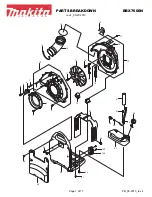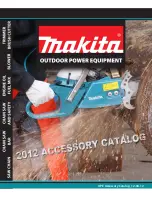
RP0193-2001
NACE International
11
NOTE: Platinized niobium (columbium) and polymeric
anodes
should
not
be
used
in
hydrocarbon-
contaminated environments.
6.2.5 The useful life of impressed current anodes can
be lengthened by the use of special backfill around the
anodes. The most commonly used backfill materials
are metallurgical coal coke and calcined petroleum
coke.
Because coke is noble compared to carbon
steel, coke should not be allowed to come into contact
with the tank bottom.
6.2.6 In the design of an extensive, distributed-anode
impressed current system, the voltage and current
attenuation along the anode and the anode-connecting
(header) cable should be considered. In such cases,
the design objective should be to optimize anode
system length, anode size and spacing, and cable size
in order to achieve effective corrosion control over the
entire surface of each tank bottom.
6.2.7 Suitable provisions for venting the anodes
should be made in situations in which it is anticipated
that entrapment of gas generated by anodic reactions
could impair the ability of the impressed current
groundbed to deliver the required current. Venting
systems must be designed to prevent contaminants
from getting into the venting system.
6.3 Safety
6.3.1 All impressed current systems must be designed
with safety in mind. Care must be taken to ensure that
all cables are protected from physical damage and the
possibility of arcing.
6.3.2 Rectifiers
and
junction
boxes
must
meet
regulatory requirements for the specific location and
environment in which they are installed. Such locations
shall be determined by reviewing regulatory agency
and prevailing industrial codes.
6.3.2.1 Consideration
should
be
given
to
locating isolating devices, junction boxes, and
rectifiers outside hazardous areas in case sparks
or arcs occur during testing.
6.3.3 In order to prevent arcing, care must be
exercised when working on piping attached to tanks
with cathodic protection applied.
When cathodic
protection systems are turned off, sufficient time must
be
allowed
for
depolarization
before
opening
connections.
Bonding cables must be used when
parting piping joints.
________________________________________________________________________
Section 7: Design Considerations for Galvanic Anode Cathodic Protection
7.1 This section describes the factors that should be
considered in the design of external corrosion protection of
on-grade carbon steel storage tank bottoms without
secondary containment that are protected by galvanic
anode cathodic protection.
7.2 Galvanic protection systems may be applied to a tank
bottom if the carbon steel surface area exposed to the
electrolyte can be minimized through the application of a
dielectric coating, the surface area is small due to the tank
size or configuration, or no power source or impressed
current source is available.
7.2.1 Galvanic anodes should be connected to the
tank bottom through a test station so that anode
performance and voltage drops can be monitored.
7.2.2 In applications for which the tank bottom is either
uncoated or large due to the tank size or configuration,
the use of impressed current cathodic protection
should be considered to minimize the cost of the
protection system. Section 6 provides more information
regarding the design considerations for impressed
current cathodic protection systems.
7.3 Galvanic Anode Selection
7.3.1 The three most common types of galvanic
anodes effective in soil environments are standard
magnesium, high-potential magnesium, and high-purity
zinc.
7.3.2 The selection and use of these anodes should
be based on the current requirements of the tank
bottom, the soil conditions, the temperature of the tank
bottom, and the cost of the materials.
7.3.3 The current available from each type of anode
depends greatly on the soil conditions, the anode
shape (whether bar, block, or ribbon), and the driving
potential of the anode.
7.3.4 If high-purity zinc anodes are employed, care
should be exercised to ensure that the anodes meet
the requirements of ASTM B 4185 Type II anode
material. The purity of the zinc can greatly affect the
performance of the material as a galvanic anode for
soil applications.
7.3.5 Zinc
anodes
should
not
be
used
if
the
temperature of the anode environment is above 49°C
(120°F). Higher temperatures can cause passivation of
the anode. The presence of salts such as carbonates,
Summary of Contents for CP 1
Page 1: ...CP 1 Cathodic Protection Tester Course Manual February 2005 NACE International 2000 ...
Page 265: ......
Page 266: ......
Page 267: ......
Page 268: ......
Page 301: ...RP0169 2002 32 NACE International ISBN 1 57590 035 1 ...
Page 535: ...TM0101 2001 24 NACE International ISBN 1 57590 137 4 ...
















































